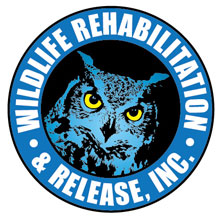I thought you might be interested in the process I go through when I take in wildlife to rehab. Whatever the species, I go through the same steps. When I first receive the wildlife in Step #1 I put it in a container that is large enough for it to move around but small enough to restrict its movement. I’m concerned that it does not injure itself further, and, the more space it has, the more likely it will do that. I compare the situation to setting a child in a chair and telling it to sit down and behave.
I keep it warm, feed it if it will eat, and watch it. I have found watching it to be the most important part of Step #1 because I learn what is wrong. That information helps me formulate what I will do next. These critters need time for me to discover what is wrong, time for them to calm down from what they have experienced, and time to heal.
Many of them move from Step #1 to release. They needed time to de-stress from the experience, didn’t have an injury to heal, and were quickly ready to go. They were eager to get back home in the wild. I take them to a suitable location for them to live, open the container door, and let them go.
If they are not yet ready for release, they move to Step #2. I’ll explain that next week.
Thanks for caring about the critters,
Patti
